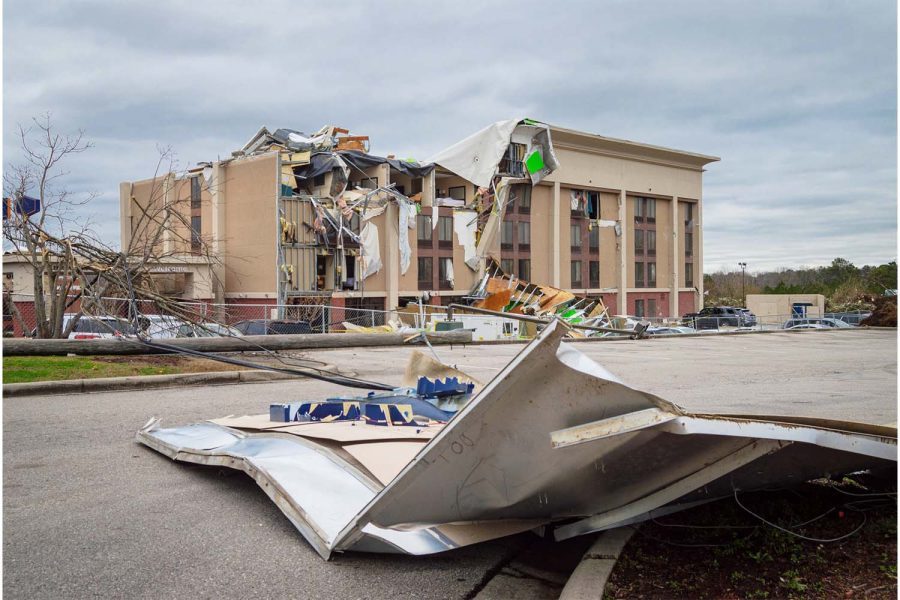Opinion | National infrastructure upgrades are needed
Natural disasters are inevitable, but we can and must take action to reduce the massive amounts of damage they can cause.
October 13, 2022
Columns reflect the opinions of the authors and are not necessarily those of the Editorial Board, The Daily Iowan, or other organizations in which the author may be involved.
Humanity will never be able to eliminate or avoid natural disasters, but there’s a plethora of measures we can take to minimize the damage they cause.
Last month, Hurricane Ian ravaged Florida, causing $67 billion in damage and knocking out power for up to 2.7 million people. However, the neighborhood of Babcock Ranch experienced little damage and no power outages thanks to infrastructure designed to combat disastrous storms.
To combat natural disasters and the devastating destruction they bring, the U.S. must drastically upgrade infrastructure across the country.
In a state where countless homes were destroyed and a county where over 90 percent of residents lost power, Babcock Ranch sustained damage no worse than a couple of uprooted trees.
Babcock Ranch can attribute their strong withstanding of the storm’s fury to various key components of their infrastructure. There, 2,000 homes are powered entirely by a solar array made up of 700,000 individual panels.
While there may be concerns about the price tag of thorough upgrades to infrastructure, the cost of those upgrades is miniscule compared to the damage costs natural disasters bring upon communities.
For example, in Clark County, Nevada, a flood prevention program was enacted to protect the Las Vegas Strip and included the construction of over 650 miles of flood channels and over 100 flood basins. The program was highly cost efficient, boasting a 2.21:1 benefit-to-cost ratio, and created 1,500 jobs.
In November, the Biden Administration passed the Bipartisan Infrastructure Law which includes a $50 billion investment to protect against various kinds of natural disasters. Hurricanes in the U.S. cause an average of $148.4 billion in damage every single year. Investing in protecting against natural disasters is not just the morally correct thing to do, it is the most financially sound option.
While Iowa does not experience hurricanes like the ones Florida experiences, natural disasters are nothing new to Iowa.
In 2020, Iowa saw a powerful derecho, a storm that knocked out power for hundreds of thousands of people and caused $7.5 billion in damages, the most ever caused by a thunderstorm in U.S. history.
It’s not just powerful thunderstorms that hit Iowa. Iowa experiences an average of 51 tornadoes a year, ranking eighth in the nation for average annual tornadoes.
There are various steps that can be taken to counter tornado/storm damage. For example, building homes with features such as interlocking shingles, impact-resistant glass, and anchor bolts could help minimize damage. Additionally, the construction of easily accessible shelter areas within homes and other buildings would be extremely useful.
While there are certainly discrepancies between the storms that hit Florida and the storms that hit Iowa, Iowa can still learn a great deal on storm prevention from a place like Babcock Ranch.
For example, Babcock Ranch buries their power and internet lines to protect them from wind damage. In a state that experiences tornadoes much more frequently than most, a measure like this would be extremely useful to protect citizens from power outages.
As the global average temperature rises, extreme weather events are likely to become more intense and more frequent. Additionally, climate change makes weather events more unpredictable. Our cities and towns must be prepared to resist extreme weather events. There has never been a better time to improve our infrastructure to withstand natural disasters.
There are countless reasons to upgrade the outdated infrastructure of the US. When the safety and security of citizens and their homes and businesses are at risk, updating infrastructure should not be an “if”, but a “when”.



